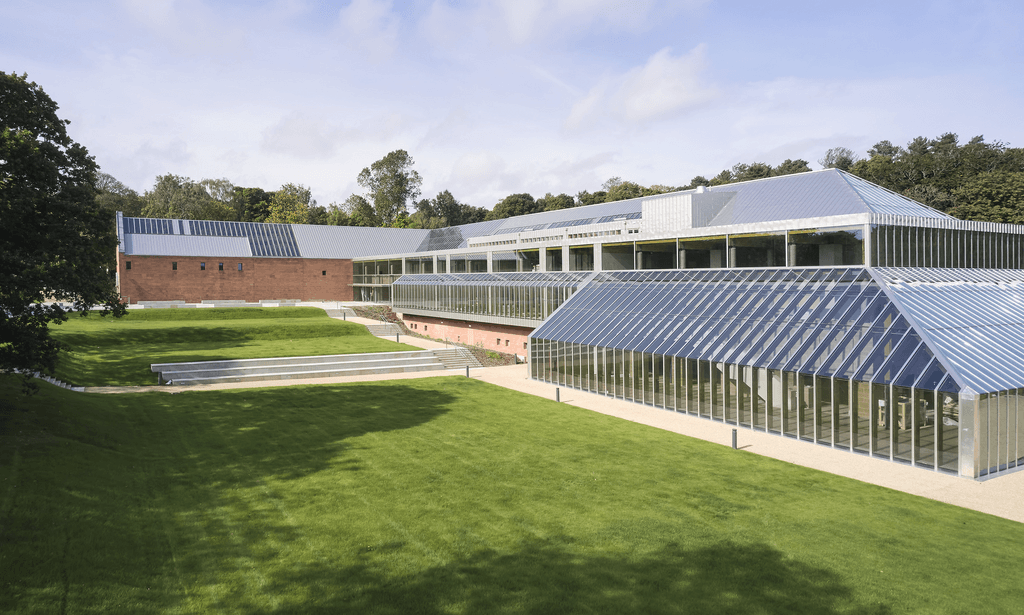Sustainability Award
 The Burrell Collection, in Pollok Country Park, Glasgow, comprises a vast array of precious art from around the world. First opened in 1983, it is one of Scotland’s few Category-A listed post-war buildings and the youngest to be designated. However, the deterioration of the building meant it required renovation and repair to ensure the collection was safe and the building itself was fit for purpose.
The Burrell Collection, in Pollok Country Park, Glasgow, comprises a vast array of precious art from around the world. First opened in 1983, it is one of Scotland’s few Category-A listed post-war buildings and the youngest to be designated. However, the deterioration of the building meant it required renovation and repair to ensure the collection was safe and the building itself was fit for purpose.
Since the Scottish Government’s pledge to achieve net zero emissions by 2045 via the Climate Change Act 2019, the construction and operation of Scotland’s buildings has played a considerable role in reaching targets. But achieving the required large-scale sustainability improvements is not an easy task, particularly in a listed historic building. Concentrating on the building envelope from the outset of a new build or retrofit project embeds sustainability into its DNA. By considering new material selections and recycling existing construction components, embodied carbon can often be reduced during construction and requires occupants to do less to operate their building through energy-saving technology or renewable energy generation.
From our earliest building surveys and inspections, it was obvious that there was greatness and quality in the materials of the existing building. Using a ‘fabric first’ approach meant we could harness the environmental benefits of the building’s existing built fabric. For example, we were able to reuse the existing aluminium glazing frames, which saved over 8.5 tonnes of new aluminium production. Over 16 tonnes of glass were recovered for reprocessing into new architectural glass. This approach is rarely achieved in refurbishment projects.
Visitor numbers have gone from 160k in the whole of 2016, mostly from the local area, to 330k in the first five months of opening, with 52% from overseas. A common theme in visitor feedback is the quality of light bringing the collection to life, a result of new high-performance glazing and improved solar control across the building which will save 70 tonnes of carbon per annum in operation.
The Burrell has become the catalyst for further research and development around material recovery from existing buildings. Following both the positive outcomes and lessons learnt from this pilot project, Arup has continued to highlight to the glass industry, from manufacturers to research institutions and end of life/recycling facilities, the potential opportunities and the environmental benefits of recovering glass from buildings for remelting instead of the business-as-usual approach of downcycling or landfilling.
Arup has forged new relationships and partnerships with industry to deliver the services of façade dismantle and material re-processing and provides services to oversee the recovery process on behalf of clients, clearly demonstrating carbon savings from material recovery.
As we address the climate emergency, the Burrell Collection is a beacon of optimism – demonstrating the need for innovation, collaboration and a holistic overview. It achieved a BREEAM Excellent rating, putting it in the top 10% of energy efficient buildings in the UK – a significant achievement for the refurbishment and conservation of a Category-A listed building.
View the Arup profile in the MCA Members Directory.

